Which Freshwater Aquarium Plants Should I Use by Clifford Woods 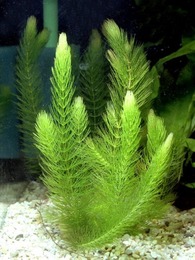 Vegetation in freshwater fish tanks makes it look fantastic and live, especially when properly lighted. They not only enhance the appearance of your aquarium, but also help with the all round natural stability of your tank's environment.
Much like plants above water, they help in the removing carbon dioxide and increase oxygen. Furthermore, they also assist in sustaining the chemical harmony of your tank's water by decreasing nitrate quantities.
Needless to say, proper care needs to be taken when adding any new component into a fish tank. With vegetation for freshwater fish tanks, exceptional care must be taken in the decision process to make sure that there are absolutely no unwanted effects to the fish, other plants, or the purification system due to their introduction.
To guarantee the best selection, get your plant life from a reliable supplier like a local fish shop; preferably one you know well. The plants should seem healthy at first glance. Any sort of wilting or abnormal browning may be indications of an incorrectly maintained plant or even a contaminated plant.
There are a few main types of plants that you can get for freshwater fish tanks. They are as follows:
Ferns and Mosses
Ferns and mosses can thrive with no need for a complicated root system. Therefore they are able to attach themselves to specific things like stones, decorations and practically any substrate present within your aquarium. These are non-blooming and supply great cover leaves for fish searching for a hiding place.
Stem Plants
Stem plants are a type of flowering plant; however they have a tendency to grow in a far more vertical manner than rosette plants which will be discussed below. These stem plants are ideal for setting up a forest-like background for your fish tank. It is advisable that you put them to the back of the aquarium, providing a beautiful background without hindering your view into the fish tank.
Rosette Plants
Rosette plants are thought to be great decorative plants. Varieties within this group will exhibit a fantastic array in colors. These will require special focus in the way they are attached into your substrate, as their root system is far more extensive than the roots of ferns. With this kind of plant life you should make sure you have a double layer of substrate in your tank.
A two inch base level needs to be applied specifically to deal with the nutritional requirements of this type of plant. Laterite is a red tropical soil and is extremely ideal for plants with extensive roots. Over the nutritional level of the substrate, a one inch covering on top of the substrate, of your preference, can be used.
Regardless of the variety of vegetation that you choose to put in your fish tank; you should supply sufficient illumination for their photosynthesis procedures to easily take place.
Furthermore, it is advisable to be on the lookout for algae breakouts as algae compete with your vegetation for nutrients. Be sure that you eliminate any algae development from the sides of the aquarium. If algae are located on the plants themselves, softly scrub the afflicted plants to get rid of the algae. A probiotic aquarium solution with beneficial microorganisms would be a good option for algae control and will not harm your plants.
Finally, if the plants are growing out of your aquarium, do prune them to keep them at a controllable and decent size. Plants for freshwater fish tanks do not need to be frustrating to deal with as quite a few beginner fish tank fans often consider them to be. With a little research and using the basic maintenance guideline as above, anyone can take pleasure in the visual elegance and environmental assistance which only live plant life can offer.
 Caring For Your Koi Pond During Spring
By Clifford Woods
Throughout the spring, your Koi fish pond will become more active. For most of their time during their deep winter sleep, the existing creatures in your pond are preparing to spring alive at the very first indications of the warm weather. This point is the most ideal time to care for your fish pond and preserve it well before your fish, vegetation, and other organisms in your pond return to life from their deep hibernation. Considerable changes will be taking place as the days and nights become warmer.
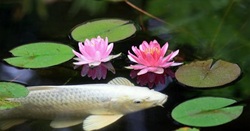 Simply keep track of temperatures and when it reaches about fifty degrees on average this will be about the most ideal time to take care of your Koi pond.
The upkeep necessary for your fish pond is dependent upon just what has occurred throughout the winter months. A harsh winter calls for even more modifications than normal. This is one of the reasons that it is a smart idea to start once caring for your pond as soon as you notice alterations in the climate. Always remember that servicing in the springtime must be carried out on an annual basis, regardless of how minor or severe the prior winter season has been.
Pay attention to the water quality of your Koi pond. You will observe that the pond's water is extremely clear when the conditions change from winter to spring. Do not let this clear appearance deceive you, because there are going to be variables which will result in serious complications once summer comes along if you do not solve these problems at the earliest opportunity.
 Throughout the autumn and winter months, leaves along with other plant substances could possibly have found its way into the fish pond. Despite the fact that the water appears clear, these components have inserted considerable amounts of nourishment in the water, which will lead to immediate algae development once the spring hits.
In addition, large quantities of natural materials in the pond will begin to go through decomposition, which will reduce the oxygen levels in the water. Now, because the water in your pond is extremely clear, this will be the ideal chance to clear all those undesirable debris and wastes.
You can accomplish this by:
- Employing a fine mesh net to scoop out most of those particles. At this point, the only real issue here is that many nets are only going to cause more debris in your pond as opposed to eliminating them from it.
- Once you have taken out those unnecessary particles and wastes, test out the quality of your water. The winter months would have caused changes in the pH quantities of the fish pond. At the start of the spring season, the pH volume of the water should be eight.
- Above all else, always remember to take care of and look after your fish. Take into account that spring is an extremely vulnerable time for your fish since they have not ingested any food for ages and they've been dwelling on a fairly low amount of energy. This could cause your fish to be far more susceptible to problems with harmful bacteria, viruses, fungi, and parasites. At this point in time, it is an excellent idea to take every one of the essential precautionary actions for your Koi and the overall health of the pond.
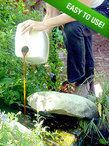 Manage your Koi pond with the addition of a probiotic algaecide solution filled with beneficial microorganisms which will substantially reduce those dangerous infestations and debris. As soon as the weather warms up, an additional amount of this kind of treatment solution will secure the well-being of your Koi as they rebuild their own defense systems.

All about Pond Magician and How to Use it Effectively
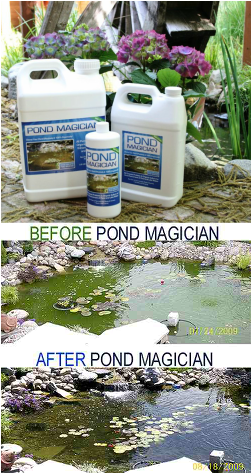 Pond Magician is made up of an incredible number of beneficial microorganisms that maneuver through your pond and consume the microbes and contaminants which make your pond unpleasant as well as foul-smelling.
Unlike similar pond cleaners which exclusively deal with natural materials, Pond Magician is made up of both aerobic and anaerobic beneficial microorganisms, therefore making it easily adaptable to a large selection of pond water situations.
What are Beneficial Microorganisms?
Beneficial microorganisms are composed of billions of friendly microorganisms. Generally, they simply eat up the algae and unwanted organisms. These microbes are advantageous to the water, plants, and fish life that thrive within your pond and they can be extremely eager for the impurities and organisms which make your pond unclean.
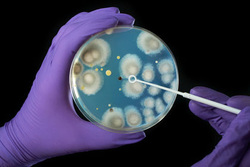 A few of the beneficial microorganisms can flourish even within environments where there is little if any breathable oxygen available. For this reason, beneficial microorganisms are quite effective regardless of the situation. Apart from being less expensive when compared with other deodorizing remedies, the application process is quite easy.
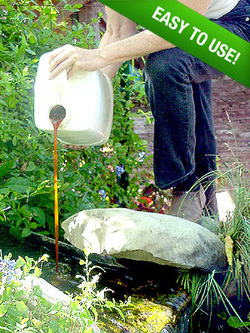 How to Use Pond Magician and Determine the Quantity Needed
Pond Magician is incredibly user-friendly. Simply pour it into your pond directly from the container. Put just a little at a handful of locations around the border of the pond or even dump it into the flow or waterfall for those who have one. The concept is to get the solution equally distributed within the pond.
You may also apply it on top of the pond's surface area with a backyard sprayer. This can help in the case that you have a large amount of surface algae.
Before you apply it, first you have to determine the amount of gallons in your pond by employing this basic formula:
- Multiply the average length in feet of the pond by the average width in feet.
- Then multiply that answer by the average depth in feet.
- Then multiply that answer by 7.48.
- This answer is the approximate number of gallons in your pond.
After that, making use of the guidelines below will determine the quantity of Pond Magician you will need for two applications.
- 0-1,000 Gallons = 1 Quart
- 1000-5000 Gallons = 1 Gallon
- 5,000 - 12,500 Gallons = 2.5 Gallons
- 12,500 Gallons or More = Please give us a call for precise instructions at (818) 897-4444
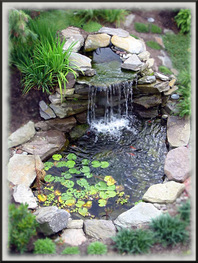 The Benefits of Pond Magician
As these beneficial microorganisms carry out their job, your pond will receive the subsequent advantages:
- The pond is going to have an extremely enjoyable, refreshing aroma.
- The pond water is going to be as healthy and crystal clear as water coming down a flowing mountain stream.
- The plants and fish will be extremely pleased and live longer.
Over dosage Precautions
Essentially, there is absolutely no chance of overdose due to the fact Pond Magician is made up of beneficial microorganisms. On the other hand, using more than needed will become significantly less cost-effective to the customer. In contrast to chemical products, where there exists a devastating consequence when overdosing occurs, organic bio-solutions only will stop functioning whenever there isn't enough excessive nourishment within the pond.
The main issue linked to overdosing beneficial microorganisms, besides cost, is the fact that when there is a great deal of natural and organic accumulation when you overdose, it is possible to induce an excessive amount of activity and need for oxygen. Basically, an over dosage of microorganisms would use up the oxygen in the water that sustains the fish. 
Algae: The Leading Cause of Fish Deaths in Ponds
by Clifford Woods 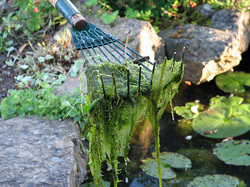
Fish pond algae are really a general name which represents all of the various types of algae, normally present in ponds. A few varieties of algae can actually be beneficial to the overall health of the pond while others types can be viewed as a real annoyance.
You will need to prevent as many algae blooms as you can in order to keep your fish and visual appealing pond vegetation alive. The most prevalent type is the floating green algae, like chlorella, euglena, and chlamydomonas varieties. They grow and reproduce quickly through cell division or spores.
Filamentous algae, also known as string algae, appear to be lengthy green noodles and have a hair-like visual aspect to them. The looks are a result of a combination of cells joined up end to end. Horse hair algae and blanket weed types like spirogyra, oedogonium, and cladophora are quite prevalent.
The Factors That Lead to Pond Algae Growth
The main three variables that enables pond algae to produce consists of: hot temperatures, vitamin abundant pond water, and crystal clear pond water that permits sunshine to pass through. A rise in temperatures speeds up both blanket weed and suspended green algae advancement.
How Various Algae Varieties Affect the Overall Health of the Fish Pond
Floating planktonic algae distribute at a speedy pace and can only be managed by ultraviolet illumination from a UV sterilizer. The UV spectrum splits the cell surfaces, resulting in the algae to collect together which in turn allows filters to easily remove the algae from the pond. An substantial amount of floating green algae can produce what is known as algae blooms. They could be devastating to pond fish as the blooms will at some point deprive the pond of oxygen thus killing off all underwater plants and fish life. 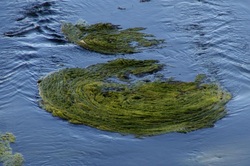 Why Too Much Algae is Harmful for Garden Ponds
Algae does not just make the pond seem unpleasant and overgrown, but in more severe situations, can actually cause the pond to smell foul. The rotting process of algae eats up oxygen from the pond water. This is especially harmful to the oxidizing bacteria and pond fish population, which both need oxygen to thrive.
Keep in mind that ammonia must be changed into nitrites by the oxidizing microorganisms. The oxidation procedure calls for vast volumes of oxygen to be able to take place. The rise in ammonia, which is additionally created by decaying algae matter, puts even more stress on the pond filtration system that houses the nitrifying microorganisms.
 How to Control Algae in Your Fish Pond
By far the most effective way of handling suspended planktonic algae is to make use of a UV clarifier or UV sterilizer. The ultraviolet spectrum eliminates the single-celled algae, resulting in it expiring and sticking to other deceased algal cells.
However, UV does not discriminate between good and bad microorganisms and will simply kill all of them. This is not really good for your fish. And not all algae are bad for a fish pond ; in fact, algae can be quite helpful to the pond because it supplies a way to obtain food for fish, presents shade from the sizzling sun, and offers as a shelter from king fishers, heron, along with various other birds.
Make an effort to cover a minimum of one third the surface area of the fish pond with plants, since they contend with algae cells for the accessible vitamins in the pond water.
Conduct regular cleaning by getting rid of string algae and blanket weed by using a garden rake.
It really is alright to have a bit of algae on pond surfaces, filtration systems, as well as other pond maintenance gear. The key is to keep it in check with a probiotics solution such as an organic algaecide created with beneficial microorganisms.
 Clifford Woods is the CEO of Effective Environmental Services
and Organic Environmental Technology.
We brew Beneficial Microorganisms that eat toxins and offer Naturally Organic Solutions.
Algae Management in Freshwater Aquariums
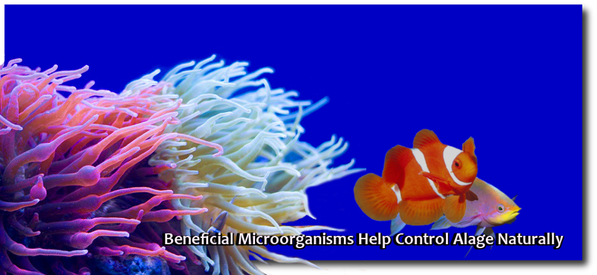 By Clifford WoodsAn aquarium tank can be quite the exceptional addition to a home or workplace. There isn't anything more relaxing than viewing fish swimming in harmony through the clear, dazzling tropical water. On the other hand, there is practically nothing more unpleasant than an aquarium tank abundant with algae.
Below are a handful of concerns and tips to assist with algae management.
Just about all fish displays contain algae. A small bit of it is not necessarily harmful, however if it isn't controlled algae can multiply quickly and take control of your freshwater tank which is extremely troublesome to clean, not to mention unhealthy for the fish.
Green algae are normal for most freshwater tank owners. The two main varieties, green dot and hair, can be time intensive in addition to difficult to eliminate from the aquarium.
These algae grow quickly in fish tanks that get an excess of sunshine. The darker types of algae, such as black brush, generally grow soon after the initial set-up of the tank.
The algae development in fish tanks that have already been set up for a longer period of time may be related to problems with the level of phosphate or nitrate in the water.
The growth of these algae may also linked to excessive amounts of light. In order to eliminate it from the fish tank, in most cases you have to clean the entire tank extensively, decrease light exposure, and also make certain that the water condition is at a suitable temperature.
Blue-green algae and red brush are two additional varieties of algae that may develop in a fish tank. The red brush variety generally has a tendency to form in fish tanks having higher pH levels. Blue-green algae are a slimier type which can be dangerous to both vegetation and fish in the tank.
One of the better processes to inhibit the development of numerous algae would be to manage lighting. For algae management, never place fish tanks close to windows and be sure to reduce the lighting to eight hours on a daily basis. Employing a lighting timer is a fantastic way to supply your fish tank with suitable quantities of light.
Much like your fish, algae have to consume to live. Algae develop best through taking in phosphorus, potassium, and nitrogen. You have the capability to significantly enhance algae management in freshwater fish tanks by making certain that your tank is not overwhelmed by fish waste products, excessive food, or rotting vegetation. Additionally, perform water adjustments regularly and use a properly measured filtration system.
Incorporating algae consuming agents to your aquarium would be a good option. Snails and algae-eating species of fish are able to assist in the management of algae within the tank.
You should be aware that snails can populate remarkably quickly, however with proper control including a snail and an algae-consuming species to a fish tank could very well be an excellent idea. Take note that when all of the algae are consumed, you are going to have to feed these fish with store-bought food.
It is not unusual for algae to start to re-populate within a clean fish tank during a time span of just three weeks. For regular algae regulation, be mindful with regards to overfeeding your fish, promptly remove any dead fish from the tank, be aware of the amount of light that the aquarium receives, and also use some type of filtering method.
Additionally, remove any obvious algae with a scrubber designed for this sort of cleanup. A really simple way to eradicate algae from a freshwater fish tank would be to apply a probiotic algaecide.This type of solution is perfectly safe for your fish and actually benefits the water in numerous ways due to the beneficial microorganisms contained with the product.

|


















 RSS Feed
RSS Feed